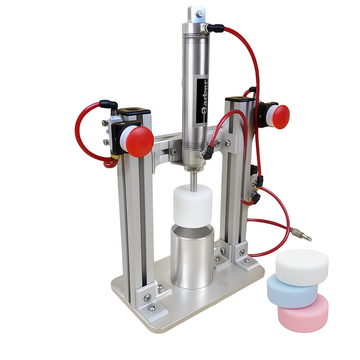DIY Shampoo Bar Recipe
Shampoo bars are quickly becoming one of the most popular eco-friendly alternatives to traditional bottled shampoo. Compact, long-lasting, and plastic-free, they’re loved by both consumers and handmade cosmetic brands. If you’ve been wondering how to make shampoo bars at home or at scale for your business using a shampoo bar press is the most efficient way to get consistent, professional results.
In this guide, we’ll cover:
-
What shampoo bars are and why they’re trending
-
Ingredients you’ll need for DIY shampoo bars
-
Step-by-step instructions to make shampoo bars with a shampoo bar press
-
Tips for scaling production with a solid shampoo press
Why Shampoo Bars Are in Demand
-
Eco-friendly: No plastic bottles, less packaging waste.
-
Travel-friendly: Solid shampoo bars can go in carry-on luggage without liquid restrictions.
-
Cost-effective: One bar often replaces 2–3 bottles of liquid shampoo.
-
Scalable: Handmade cosmetic businesses can produce hundreds of bars daily with the right equipment.
Ingredients for DIY Shampoo Bars
A basic shampoo bar recipe includes:
-
SCI (Sodium Cocoyl Isethionate) – gentle surfactant for cleansing
-
Cocamidopropyl Betaine – adds mildness and lather
-
Butters & Oils – like cocoa butter, shea butter, jojoba oil for nourishment
-
Essential Oils or Fragrances – for scent and added benefits
-
Herbal Additives – such as green tea, chamomile, or activated charcoal
You’ll also need isopropyl alcohol (70%) in a spray bottle to smooth and bind bars during pressing.
Equipment You’ll Need
-
Mixing bowls and spoons
-
Heat-safe containers for melting butters
-
Gloves and protective gear
-
Shampoo bar molds (round, square, or custom designs)
A solid shampoo press machine ensures your bars are compact, uniform, and salon-quality. Hand-shaping can work for small batches, but pressing is essential if you plan to sell.
How to Make Shampoo Bars with a Shampoo Bar Press
-
Measure and Melt
-
Melt butters (like shea and cocoa butter) gently in a double boiler.
-
-
Blend Dry Ingredients
-
In a mixing bowl, combine SCI powder and other surfactants.
-
-
Add Liquids & Oils
-
Stir in melted butters, oils, and any fragrance or essential oils.
-
-
Form the Mixture
-
Mix until the consistency resembles damp sand. If too dry, add a few drops of distilled water.
-
-
Load the Mold
-
Place your shampoo bar mixture into the mold cavity of your shampoo bar press.
-
-
Press the Bar
-
Use your press (manual or pneumatic) to compact the mixture into a solid shampoo bar.
-
Spray lightly with isopropyl alcohol to smooth edges and finish.
-
-
Dry and Cure
-
Let the pressed bars dry for 24–48 hours before packaging.
-
Scaling with a Shampoo Bar Press
If you plan to sell shampoo bars, a professional shampoo bar press machine can produce dozens (or hundreds) of bars per day. Compared to hand-shaping, pressing offers:
-
Consistency – every bar the same size & weight
-
Durability – tightly pressed bars last longer in the shower
-
Speed – much faster than molds alone
-
Professional look – better presentation for retail and e-commerce
Final Thoughts
Shampoo bars are part of the sustainable beauty movement, and using a shampoo bar press makes production easier, faster, and more professional. Whether you’re a DIY enthusiast making shampoo bars at home or a small business scaling up, a solid shampoo press is the best investment for quality and consistency.
👉 Looking for the right machine? At Bath Bomb USA, we manufacture presses and molds designed for handmade bath, body, and shampoo products. Check out our Shampoo Bar Press machines to start making eco-friendly shampoo bars today.
Q1: What ingredients are needed to make shampoo bars?
A: Common shampoo bar ingredients include Sodium Cocoyl Isethionate (SCI), cocoa butter, shea butter, jojoba oil, essential oils, and herbal additives like chamomile or green tea.
Q2: Do I need a press to make shampoo bars?
A: You can hand-shape shampoo bars, but a shampoo bar press ensures your bars are compact, consistent in size, and professional looking — essential for small businesses.
Q3: How long should shampoo bars dry before packaging?
A: After pressing, let shampoo bars dry for 24–48 hours to harden before packaging or selling. This helps improve durability and shelf life.



